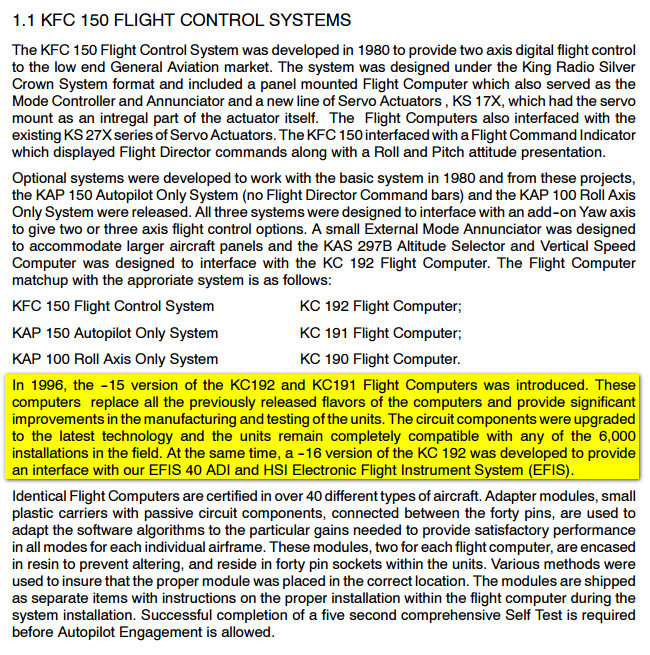Yes, VS mode needs to be used with a big margin, because the IAS bleeds off as you climb.
I normally climb at 700fpm initially, soon dropping to 500fpm, and dropping to 300-400fpm at say FL100. One can climb a lot faster but there is little point because one is merely flying slower and needs to pay a lot more attention to the rudder trim.
Having a constant IAS mode would be better but not much because (on the TB20) one wants ~120kt initially for CHT management, but this cannot be maintained for long.
As you say, a Jetprop would be something else  But in our little slow planes we need to manage the situation more proactively.
But in our little slow planes we need to manage the situation more proactively.
Peter wrote:
I am not actually sure whether these autopilots have any coupling between pitch and roll behaviour. FWIW, I have never seen any evidence of it.
I would guess that the KAP140 and other two-axis autopilots without pitch input uses an accelerometer, otherwise it would not be able to react quickly to pitch disturbances (which it does).
In that case, when the roll channel turns the aircraft it has to have some way of telling the pitch channel that the increased acceleration is due to the turn and not to a disturbance in pitch. Otherwise the pitch channel would initially react to the turn by lowering the nose.
Peter wrote:
VS is measured barometrically – no other way to do it
At the start, there is a vertical acceleration too, I believe, so that it starts moving faster. The turn will create a small acceleration on the vertical plane too
Yep, that’s why we use the Flight Director to set a pitch (using CWS), rather than select a vertical speed for a climb.
For descends I do use the VS mode.
So it’s not possible to set a pitch with the KFC140? I fly a KFC150.
Mine is a KAP140, not a KFC one.
KAP is for turn coordinator based, KFC for attitude based AP, AFAIK.
I have an answer from Avionics Straubing, I will post later, when able to.
KAP xxx and KFC xxx are the same underlying autopilot, but the KFCs drive a flight director.
So KFC are not all attitute-based, as Peter’s KFC225 ?
Aviation Straubing was kind enough to provide a very nice troubleshooting strategy.
Here is what they offer, first focusing on the internal accelerometer offset.
Dear Alexandre,
The KAP 140 A/P is not attitude based-he becomes the pitch ref signal from an internal accelerometer
1) Please perform the system offset adjustment (described in the document Peter has quoted above, chapter 2, page 5):
* Apply Ground Power to the aircraft and switch the avionic master on.
* Allow the A/P to store the vertical acceleration offset
* The aircraft should be stable for 20 minutes with no movement
* After that switch the avionic master off
2) If the alignment bring you no improvement i can send you a loaner unit for troubleshooting
3) Please check also if you have the same problem by using the alternate static source (imbalanced static source?)
4) Other possible faults if the VS change comes from the pitch trim servo:
* bad pitch motor(motor starting voltage to high)
* bad trim sensor in the pitch servo (to early movement of pitch trim)
I greatly thank them for their help, and won’t hesitate to work with them if needed.
Nice to have such efficient C.O.M.M.U.N.I.C.A.T.I.O.N. !!
It varies. KAP150, which I am familiar with, takes its roll reference from the attitude indicator. It does not have a pitch mode, only a vertical speed mode.
I think the answer to this would be very long.
The KAP140/KFC225 seem to be very similar, except as Cobalt says the KFC225 can drive a Flight Director (a feature of the KI256 vacuum horizon).
The KAP150/KFC150 are much older. A google for the IM finds e.g. this (I have all these manuals anyway but on a private passworded site, because one gets legal threats from some avionics manufacturers, plus the traffic gets too big) and this shows that the product was originally developed in 1980, so is obviously going to be analog.
But then, around 1996, it sounds like, King produced plug-compatible digital versions:

Congratulations on a good reply from Straubing!